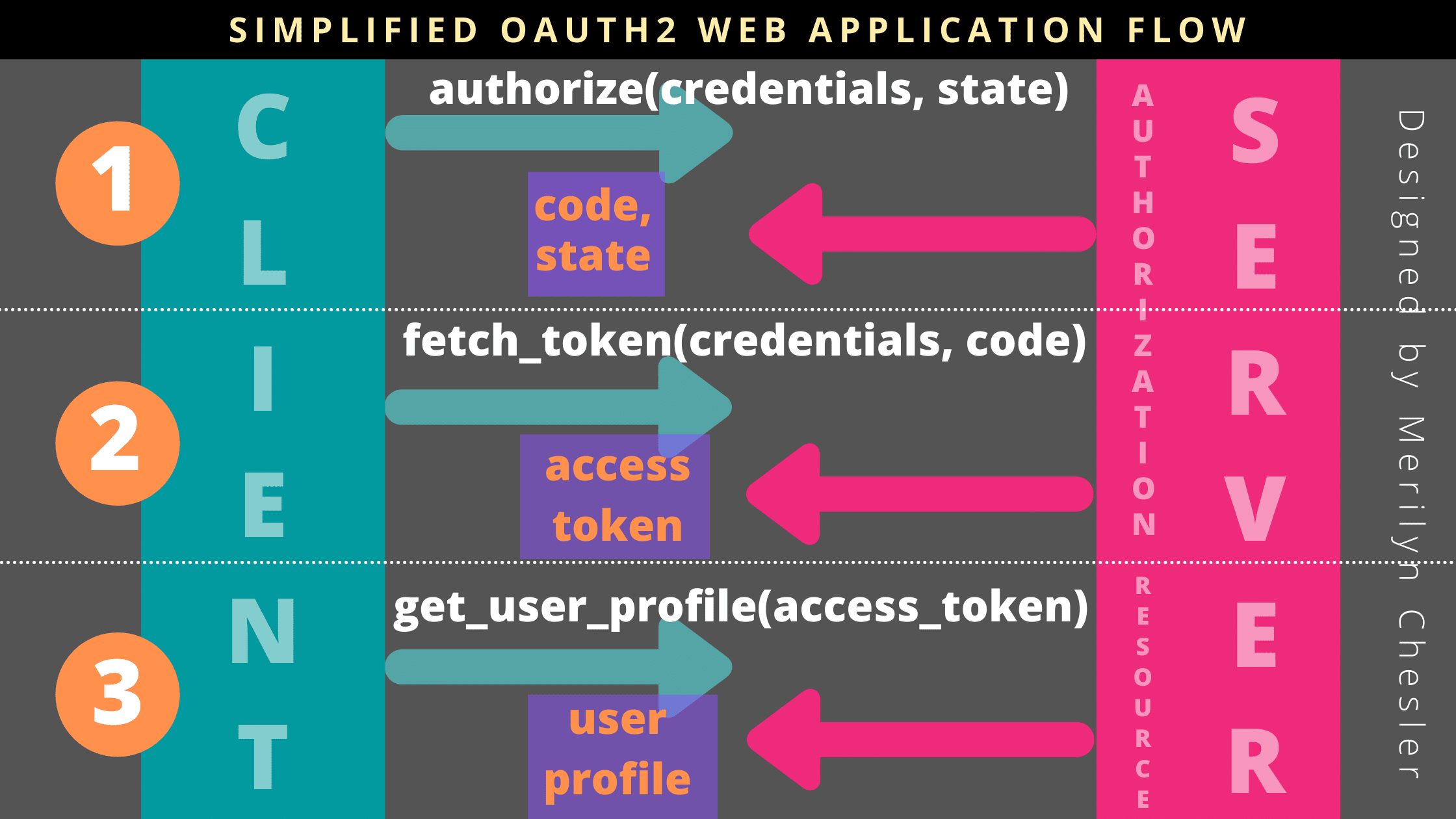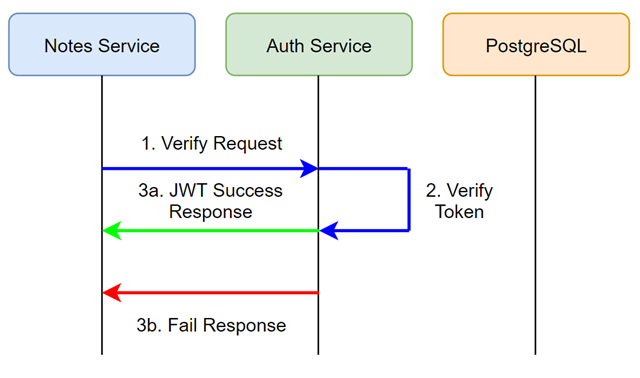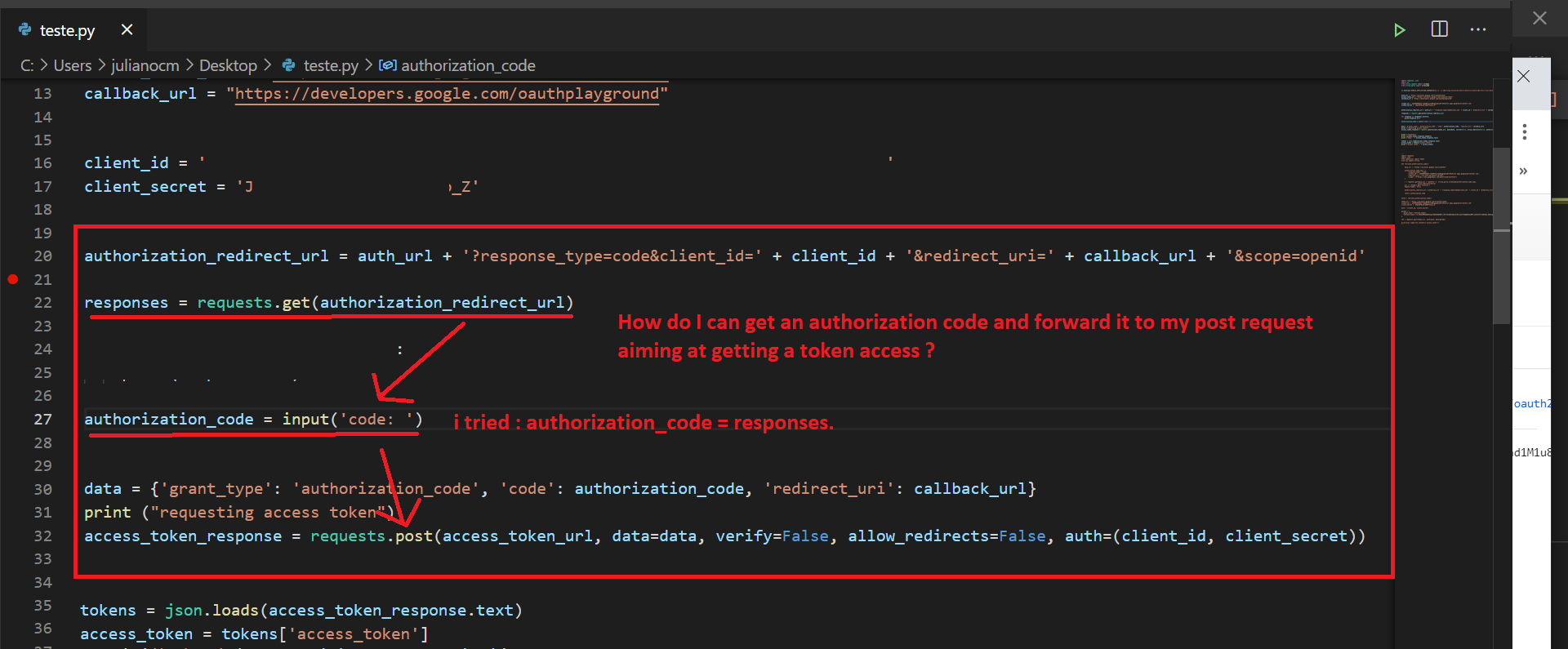How to do OAuth authentication in Python?
How to do OAuth authentication in Python?

OAuth (Open Authorization) is an authorization framework that enables a third-party application to access resources on behalf of a resource owner (typically, the end-user). In Python, you can implement OAuth authentication using libraries like requests and pyjwt.
Step 1: Register your application
Register your Python application with the provider (e.g., Google, Facebook) that you want to use for authentication. You'll receive a client ID (also known as consumer key) and client secret.
Step 2: Obtain an access token
To obtain an access token, your Python script needs to send a request to the authorization endpoint of the provider. The request should include the following:
client_id: Your registered client ID. redirect_uri: The URL where the user will be redirected after authentication (must match the one you registered with the provider).

response_type: Set to code for authorization code flow.

scope: Specify the permissions your application needs (e.g., read-only access). state: A random value used for CSRF protection.
Here's an example using requests:
import requests Replace these with your actual valuesclient_id = "your_client_id"
redirect_uri = "http://localhost:8080/callback"
scope = ["read"]
auth_url = f"https://accounts.google.com/oath20authorize?"
f"client_id={client_id}&"
f"redirect_uri={redirect_uri}&"
f"response_type=code&"
f"scope={scope}&"
f"state=random_state_value"
response = requests.get(auth_url)
Step 3: Handle the redirect
After the user approves your application's request, they'll be redirected to the redirect_uri. Your Python script should handle this redirect by sending a request to the token endpoint to exchange the authorization code for an access token.
Here's an example using requests:
# Extract the authorization code from the redirect URLcode = urlparse(response.url).query.get("code")
Request the token endpointtoken_url = "https://oauth2.googleapis.com/token"
headers = {"Content-Type": "application/x-www-form-urlencoded"}
data = {
"grant_type": "authorization_code",
"code": code,
"redirect_uri": redirect_uri,
"client_id": client_id,
"client_secret": "your_client_secret"
}
response = requests.post(token_url, headers=headers, data=data)
Parse the access token from the responseaccess_token = json.loads(response.content)["access_token"]
Step 4: Use the access token
With the access token, you can now access protected resources on behalf of the user. For example, you can use the token to fetch user information:
# Make a request to the protected endpointuser_info_url = "https://www.googleapis.com/oauth2/v3/userinfo"
headers = {"Authorization": f"Bearer {access_token}"}
response = requests.get(user_info_url, headers=headers)
Parse the user information from the responseuser_info = json.loads(response.content)
print(user_info["name"], user_info["email"])
In this example, we've demonstrated how to implement OAuth authentication in Python using requests and pyjwt. Remember to handle errors and exceptions properly when working with external APIs.
Additional Tips
Always validate the access token before using it. Store the access token securely (e.g., using a secrets manager). Be mindful of token expiration times and refresh tokens as needed. Implement proper error handling for unexpected responses from the provider.Python oauth github

Python Oauth GitHub!
Let's dive into the world of Python and GitHub to explore how we can use OAuth (Open Authorization) to authenticate API requests.
What is OAuth?
OAuth is an authorization framework that enables users to grant third-party applications limited access to their resources without sharing their login credentials. This allows for secure, delegated access to APIs.
Why do we need OAuth with GitHub?
GitHub provides a robust API for developers to interact with their repositories, issues, and more. However, these requests require authentication to ensure only authorized users can perform actions on their behalf. That's where OAuth comes in! By using OAuth with GitHub, you can securely authenticate your Python application to access specific APIs and resources.
How do we implement OAuth with GitHub and Python?
Here are the steps:
Create a GitHub App: Register your Python application as a GitHub App through the GitHub Developer Tools. This will give you a client ID and client secret. Generate an Access Token: Use the client ID, client secret, and redirect URI to generate an access token. You can use libraries likegithub-python-oauth or manually send HTTP requests to obtain the token. Set the Authorization Header: Include the access token in your API request's Authorization header using the Bearer <access-token> format.
Let's take a look at some Python code to illustrate this process:
import requests Replace with your own valuesclient_id = "your_client_id"
client_secret = "your_client_secret"
redirect_uri = "http://localhost:8000/callback"
def get_access_token():
auth_url = "https://github.com/login/oauth/authorize"
token_url = "https://github.com/login/oauth/access_token"
Step 1: Redirect user to GitHub's authorization URLr = requests.get(auth_url, params={"client_id": client_id, "redirect_uri": redirect_uri})
auth_code = r.url.split("=")[1].split("&")[0]
Step 2: Exchange the authorization code for an access tokenpayload = {"grant_type": "authorization_code", "code": auth_code, "redirect_uri": redirect_uri}
headers = {"Content-Type": "application/x-www-form-urlencoded"}
r = requests.post(token_url, data=payload, headers=headers)
access_token = r.json()["access_token"]
return access_token
def make_github_request(access_token):
Step 3: Use the access token to authenticate API requestsbase_url = "https://api.github.com"
repo_url = f"{base_url}/repos/username/repository-name/issues"
headers = {"Authorization": f"Bearer {access_token}", "User-Agent": "Your-App"}
r = requests.get(repo_url, headers=headers)
print(r.json())
Example usageaccess_token = get_access_token()
make_github_request(access_token)
Conclusion
In this example, we've demonstrated how to implement OAuth with GitHub using Python. This allows your application to securely access GitHub APIs and resources on behalf of users without sharing their login credentials. By following these steps and using the requests library, you can build robust integrations between your Python app and GitHub.
Remember to replace the placeholders (your_client_id, your_client_secret, and http://localhost:8000/callback) with your actual values from the GitHub Developer Tools. Happy coding!





























